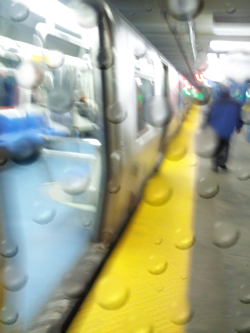Start with the application: A set of headlights that can enable the driver to see through the falling rain. Typically, it is difficult to see through rain because water droplets reflect the light that is reflected back from the water droplet. However, rain is not constant and it should be possible to time the light that can get in between the light droplet and enable the driver to see it. Dr Srinivasa G Narasimhan from Carnegie Mellon University has developed a system that enables the light to penetrate between drops and illuminate the road.
How it works: A camera takes quick pictures of the rain drop. The falling of the rain drop is then calculated to predict where the drop will be a few milliseconds later. The system then manipulates the light to illuminate where the drop is not going to be present. This requires a LCD projector and a fast computer. Ultimately, the inventors would like to see it implemented by fast LED’s that can be very responsive to the rain. It will also enable them to move the light as required to not interfere with the oncoming traffic.
Dr. Narasimhan has also come up with another idea on the same principle but the purpose being to illuminate sheets of water to enable 3D view of an object. This technology is called Aqualux 3D.
These are great ideas and need some commercialization muscle to make them practical. For example, the 3D projection, invented about 3 years ago needs a killer practical application just like the Headlight application. In addition, a technology becomes useful, famous and practical when it solves a problem. The headlight application meets all the criteria for being a useful invention but obviously needs much more work to make it practical. A problem is that the reflected light is a problem because it enters the driver’s eye in a very specific absolute location. Adjustment or movement of the driver now needs a completely different computation, not to mention the change of the driver. The refresh speed currently needs to increase from 120 Hz to 500 Hz. These and other problems will probably be addressed next but at least it shows that with today’s imaging technology it is possible to compute many images in real time and act on them.
